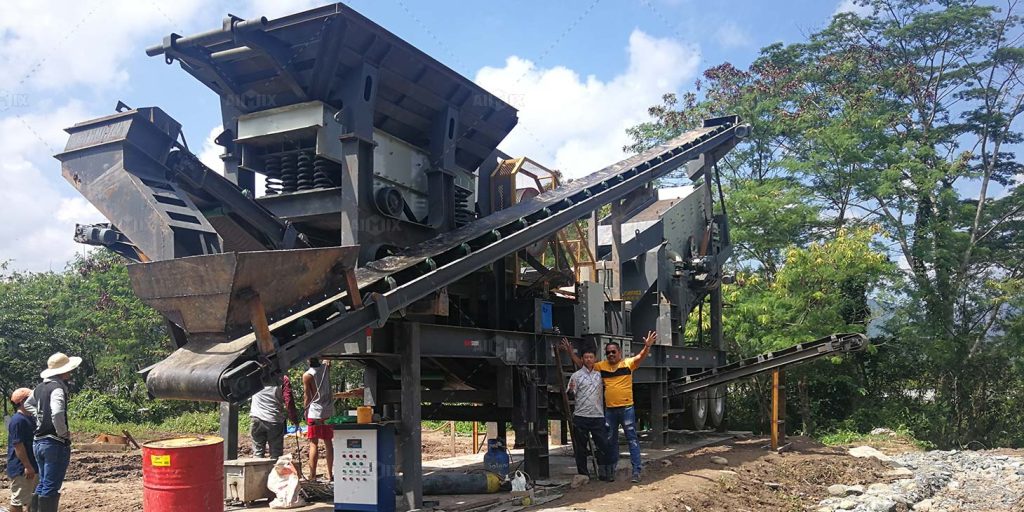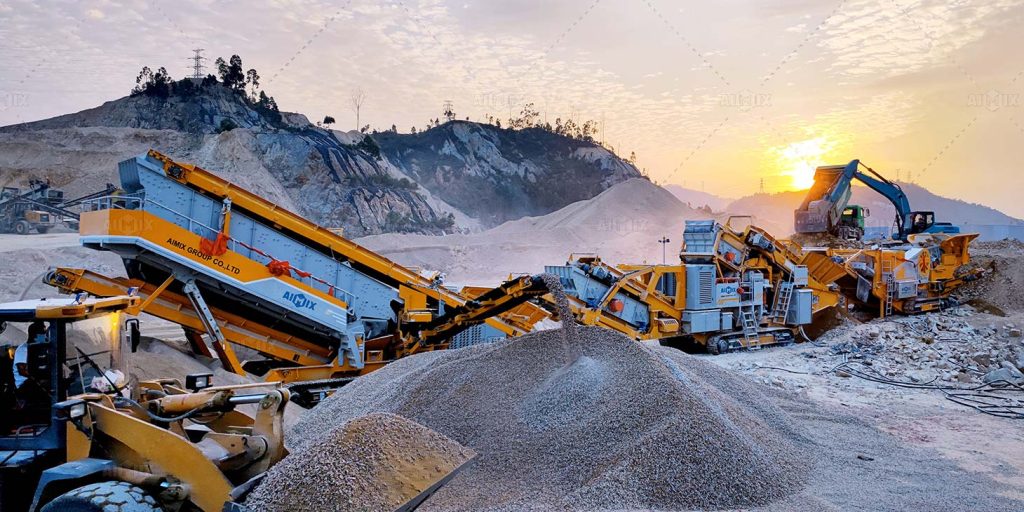A portable crusher plant is a versatile and indispensable machine used in various industries for the purpose of crushing and screening materials. Its mobility and compact design make it an ideal choice for on-site crushing, allowing businesses to process materials directly at the location of extraction or demolition. In this article, we will delve into the working mechanism of a portable crusher plant, exploring its components and discussing the advantages and considerations associated with its usage.
Components of a Portable Crusher Plant
A portable crusher plant consists of several key components that work together to facilitate the crushing and screening process. The primary crusher, as the name suggests, is the main machine responsible for reducing the size of the raw materials. Depending on the specific application, different types of primary crushers, such as jaw crushers, impact crushers, or gyratory crushers, may be used to achieve the desired results.
The conveyor system is another crucial component of a portable crusher plant. It plays a vital role in transporting the raw materials from the feeding hopper to the primary crusher and carrying the crushed materials to the subsequent stages of the process. Various types of conveyors, including belt conveyors, vibrating conveyors, and bucket elevators, are employed to ensure efficient material handling throughout the crushing operation.

Working Mechanism of a Portable Crusher Plant
To understand how a portable crusher plant works, let’s break down the process into three main stages: feeding, crushing, and screening.
The feeding process involves the controlled delivery of raw materials into the primary crusher. A well-designed feeding system ensures a steady and consistent supply of materials, preventing unnecessary downtime. The efficiency of this process depends on factors such as the type of feeder used, the size of the feed opening, and the control measures in place to regulate the material flow.
During the crushing process, the primary crusher breaks down the raw materials into smaller, more manageable pieces. This reduction in size is achieved through the application of mechanical force, generated by thecrusher’s unique features, such as its jaws, hammers, or cones. Each type of crusher has its own distinct advantages and may be chosen based on factors such as the hardness of the materials, desired output size, and production capacity requirements. Check more info about crusher here: https://aimixgroup.ph/stone-crusher-plant/

After the crushing stage, the materials move on to the screening process. Screening is a critical step that separates the crushed materials into different sizes or grades. It ensures that only the desired particles are further processed or used, while the oversized or undersized materials are redirected for additional crushing or removed from the process altogether. Various types of screens, such as vibrating screens, trommel screens, or inclined screens, are employed to achieve efficient and accurate separation.
Advantages of Portable Crusher Plants
Portable crusher plants offer several advantages that make them an attractive option for industries ranging from construction to mining. Firstly, their mobility and flexibility provide significant benefits. By allowing on-site crushing, these plants eliminate the need for material transportation to a central processing facility, reducing costs and saving time. They also provide accessibility to remote or challenging locations where hauling materials may be impractical or costly.
Cost-effectiveness is another key advantage of portable crusher plants. With on-site crushing, businesses can minimize transportation costs associated with hauling raw materials to distant processing facilities. Additionally, portable crusher plants promote efficient resource utilization by allowing immediate processing of materials, avoiding stockpiling and the associated expenses.
Furthermore, portable crusher plants offer environmental benefits. By crushing materials on-site, they reduce the need for transportation, thus minimizing pollution and carbon footprint. Moreover, these rock crusher machine for sale often incorporate features for recycling and reusing materials, promoting sustainability and circular economy principles.
Limitations and Considerations
While portable crusher plants offer numerous advantages, it is essential to consider their limitations and associated considerations. Maintenance and operational challenges are a critical factor to keep in mind. Regular maintenance, including inspections, lubrication, and parts replacement, is necessary to ensure the plant’s optimal performance and prevent unexpected breakdowns. Adequate staff training and skill set are also crucial for safe and efficient operation.
Site-specific factors should be taken into account when using portable crusher plants. The terrain and weather conditions of the site may affect the plant’s stability and productivity. Additionally, legal and regulatory compliance, such as obtaining permits or adhering to noise and dust emission regulations, must be considered to avoid potential fines or disruptions.
Conclusion
In conclusion, portable crusher plants play a vital role in various industries, enabling efficient on-site crushing and screening of materials. Understanding their working mechanism and components, such as the primary crusher and conveyor system, provides insight into their functionality. The advantages of mobility, cost-effectiveness, and environmental benefits make portable crusher plants an appealing choice for many businesses. However, it is crucial to consider maintenance requirements, staff training, and site-specific factors to ensure safe and successful operation. By embracing mobile crusher plants for sale Philippines, industries can streamline their operations and unlock the benefits of on-site material processing.
